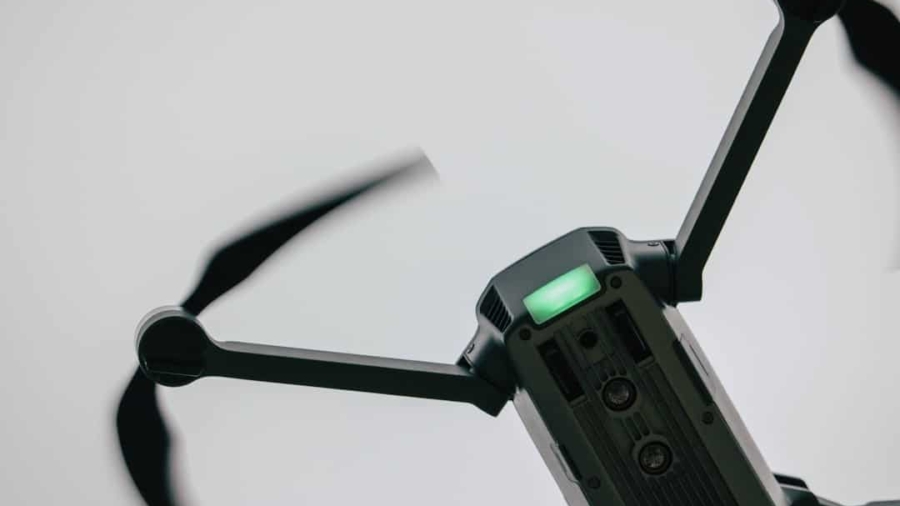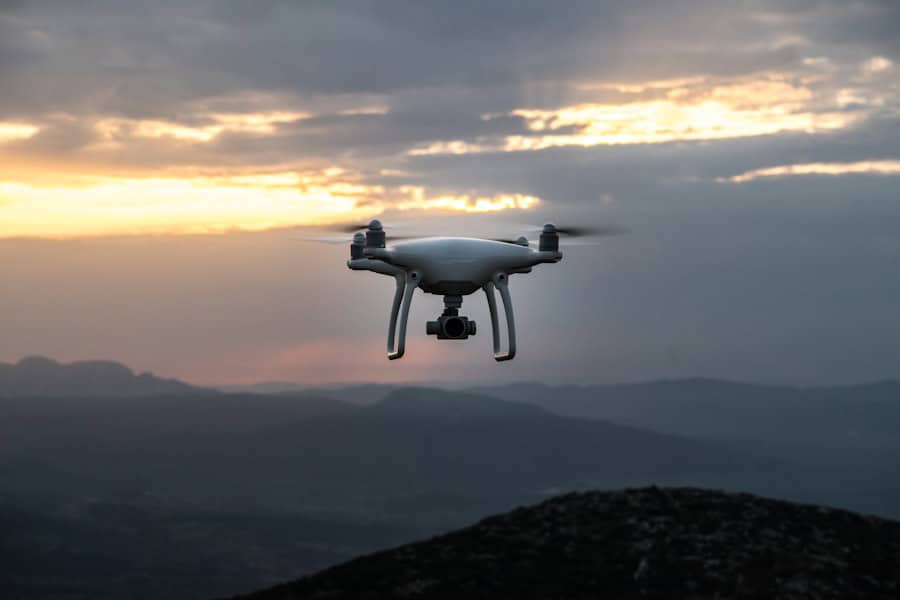The advent of consumer drones has revolutionized the way individuals interact with their environment, offering unprecedented opportunities for exploration, creativity, and data collection. These unmanned aerial vehicles (UAVs) have become increasingly accessible, allowing hobbyists and professionals alike to capture stunning aerial imagery, conduct surveys, and even engage in recreational activities. As technology continues to evolve, the integration of augmented reality (AR) with consumer drones is emerging as a transformative force.
Augmented reality overlays digital information onto the real world, enhancing the user’s perception and interaction with their surroundings. This combination of consumer drones and AR not only enriches the flying experience but also opens up new avenues for applications across various fields. The synergy between consumer drones and augmented reality is particularly compelling.
By merging the physical and digital realms, users can gain a deeper understanding of their environment while enjoying an immersive experience. For instance, drone operators can visualize flight paths, identify points of interest, or even receive real-time data overlays while piloting their drones. This integration not only enhances the functionality of drones but also makes flying more intuitive and engaging.
As we delve deeper into this topic, we will explore the myriad benefits of combining these technologies, the exciting experiences they can create, and the implications for various industries.
Key Takeaways
- Consumer drones and augmented reality are revolutionizing the way people interact with technology and the world around them.
- Integrating augmented reality with consumer drones can enhance the user experience by providing real-time data and immersive visuals.
- Fun experiences with consumer drones and augmented reality include aerial gaming, interactive treasure hunts, and virtual tours.
- Augmented reality enhances the user experience with consumer drones by providing enhanced navigation, object recognition, and interactive overlays.
- The future of consumer drones and augmented reality integration holds exciting potential for industries such as agriculture, construction, and entertainment, as well as for personal and professional use.
The Benefits of Integrating Augmented Reality with Consumer Drones
Integrating augmented reality with consumer drones offers a multitude of benefits that enhance both the operational capabilities of the drones and the overall user experience. One of the most significant advantages is improved situational awareness. With AR, drone pilots can access real-time data overlays that provide critical information about their surroundings.
For example, a drone equipped with AR technology can display live maps, highlight obstacles, or indicate no-fly zones directly in the pilot’s field of view. This feature is particularly beneficial for novice pilots who may struggle with spatial awareness or for those operating in complex environments. Moreover, augmented reality can facilitate more efficient flight planning and execution.
For instance, a drone operator surveying a construction site can use AR to visualize the area’s topography and identify optimal flight routes while avoiding obstacles such as cranes or power lines. This capability not only streamlines operations but also minimizes the risk of accidents, making it an invaluable tool for professionals in various sectors.
Examples of Fun Experiences with Consumer Drones and Augmented Reality
The integration of augmented reality with consumer drones has given rise to a plethora of fun and engaging experiences that captivate users of all ages. One popular application is in the realm of gaming, where AR-enhanced drones can create interactive experiences that blend physical flight with digital gameplay. For instance, some developers have created games where players control drones to capture virtual creatures or complete challenges in real-world environments.
This fusion of gaming and drone technology encourages outdoor exploration while providing an exhilarating experience that appeals to both gamers and drone enthusiasts. Another exciting application is in the realm of photography and videography.
For example, an AR overlay might indicate the best time to capture a sunset or highlight interesting landmarks within the drone’s flight path. This not only enhances the creative process but also allows users to produce professional-quality content without extensive training or experience.
How Augmented Reality Enhances the User Experience with Consumer Drones
Augmented reality significantly enhances the user experience with consumer drones by providing intuitive interfaces and interactive features that simplify operation and increase engagement. One notable enhancement is the use of AR goggles or mobile applications that allow users to see a live feed from their drone’s camera while simultaneously displaying relevant data overlays. This immersive experience enables pilots to maintain situational awareness without diverting their attention from the drone’s flight path.
Additionally, AR can facilitate collaborative experiences among multiple users. For instance, friends or family members can join in on a drone flight by using their own devices to view shared AR content. This could include synchronized flight paths, shared objectives in a game, or even collaborative photography sessions where each participant contributes to capturing a unique perspective.
Such interactive experiences foster social connections and create memorable moments that extend beyond traditional drone flying.
The Future of Consumer Drones and Augmented Reality Integration
As technology continues to advance at a rapid pace, the future of consumer drones integrated with augmented reality holds immense potential for innovation and creativity. One promising direction is the development of more sophisticated AR applications that leverage artificial intelligence (AI) to enhance user interactions further. For example, AI algorithms could analyze a user’s flying patterns and preferences to provide personalized recommendations for flight paths or creative projects based on their past experiences.
Moreover, advancements in hardware will likely lead to lighter, more powerful drones capable of supporting complex AR functionalities without compromising flight performance. As battery technology improves, we may see longer flight times combined with enhanced processing capabilities that allow for real-time data analysis and visualization during flights. This evolution will enable users to engage in more complex tasks such as environmental monitoring or search-and-rescue operations with greater ease and efficiency.
Safety Considerations when Using Consumer Drones with Augmented Reality
While the integration of augmented reality with consumer drones offers numerous benefits, it also raises important safety considerations that must be addressed to ensure responsible usage. One primary concern is the potential for distraction caused by AR overlays. While these digital enhancements can provide valuable information, they may also divert a pilot’s attention from critical aspects of flying, such as maintaining visual line-of-sight or avoiding obstacles.
It is essential for users to strike a balance between utilizing AR features and remaining vigilant during flight operations. Additionally, privacy concerns arise when using drones equipped with cameras and AR technology. The ability to capture images or video footage while overlaying digital information raises questions about consent and data protection.
Users must be aware of local regulations regarding drone usage and ensure they respect the privacy rights of individuals in their vicinity. Implementing best practices for responsible drone operation will be crucial as this technology continues to evolve.
The Impact of Consumer Drones and Augmented Reality on Industries and Entertainment
The convergence of consumer drones and augmented reality is poised to make significant impacts across various industries, including agriculture, real estate, construction, and entertainment. In agriculture, for instance, farmers can utilize drones equipped with AR technology to monitor crop health by visualizing data such as soil moisture levels or pest infestations directly overlaid on their fields. This capability allows for more precise decision-making regarding irrigation and pest control, ultimately leading to increased yields and reduced resource waste.
In the realm of entertainment, the integration of AR with consumer drones has opened up new avenues for immersive experiences at events such as concerts or festivals. Drones can be used to create stunning light shows that are synchronized with music while providing attendees with an interactive experience through AR applications on their smartphones. This innovative approach not only enhances audience engagement but also sets a new standard for live entertainment experiences.
The Exciting Potential of Consumer Drones and Augmented Reality Integration
The integration of consumer drones with augmented reality represents a thrilling frontier in technology that promises to reshape how we interact with our environment and each other. As these technologies continue to evolve, they will undoubtedly unlock new possibilities for creativity, exploration, and collaboration across various domains. From enhancing user experiences through intuitive interfaces to revolutionizing industries with innovative applications, the potential for growth is immense.
As we look ahead, it is essential for users to embrace these advancements responsibly while remaining mindful of safety considerations and ethical implications. By doing so, we can fully harness the exciting potential that lies at the intersection of consumer drones and augmented reality, paving the way for a future filled with endless possibilities and transformative experiences.
If you’re interested in exploring the intersection of technology and creativity, you may also enjoy reading about the Samsung Galaxy Book Flex2 Alpha. This article delves into how this innovative device can help unlock your creative potential through its advanced features and capabilities. Just like how consumer drones are integrating augmented reality for fun experiences, the Samsung Galaxy Book Flex2 Alpha offers a new way to enhance your creative endeavors.
FAQs
What are consumer drones?
Consumer drones are small, unmanned aerial vehicles that are designed for recreational use by the general public. They are often equipped with cameras and can be controlled remotely using a smartphone or dedicated remote control.
What is augmented reality (AR)?
Augmented reality is a technology that superimposes digital information, such as images, videos, or 3D models, onto the real world. This can be done through the use of a smartphone or special AR glasses.
How do consumer drones integrate augmented reality for fun experiences?
Consumer drones can integrate augmented reality by overlaying digital elements onto the live video feed from the drone’s camera. This can include adding virtual obstacles, targets, or other interactive elements to create a more engaging and immersive flying experience.
What are some examples of fun experiences with consumer drones and augmented reality?
Some examples of fun experiences with consumer drones and augmented reality include drone racing with virtual obstacles, aerial treasure hunts with digital clues, and multiplayer games where players compete to capture virtual targets using their drones.
Are there any safety considerations when using consumer drones with augmented reality?
Yes, it is important for users to be aware of their surroundings and to follow local regulations when flying drones, especially when using augmented reality features. It is also important to ensure that the drone’s sensors and obstacle avoidance systems are functioning properly to avoid accidents.



